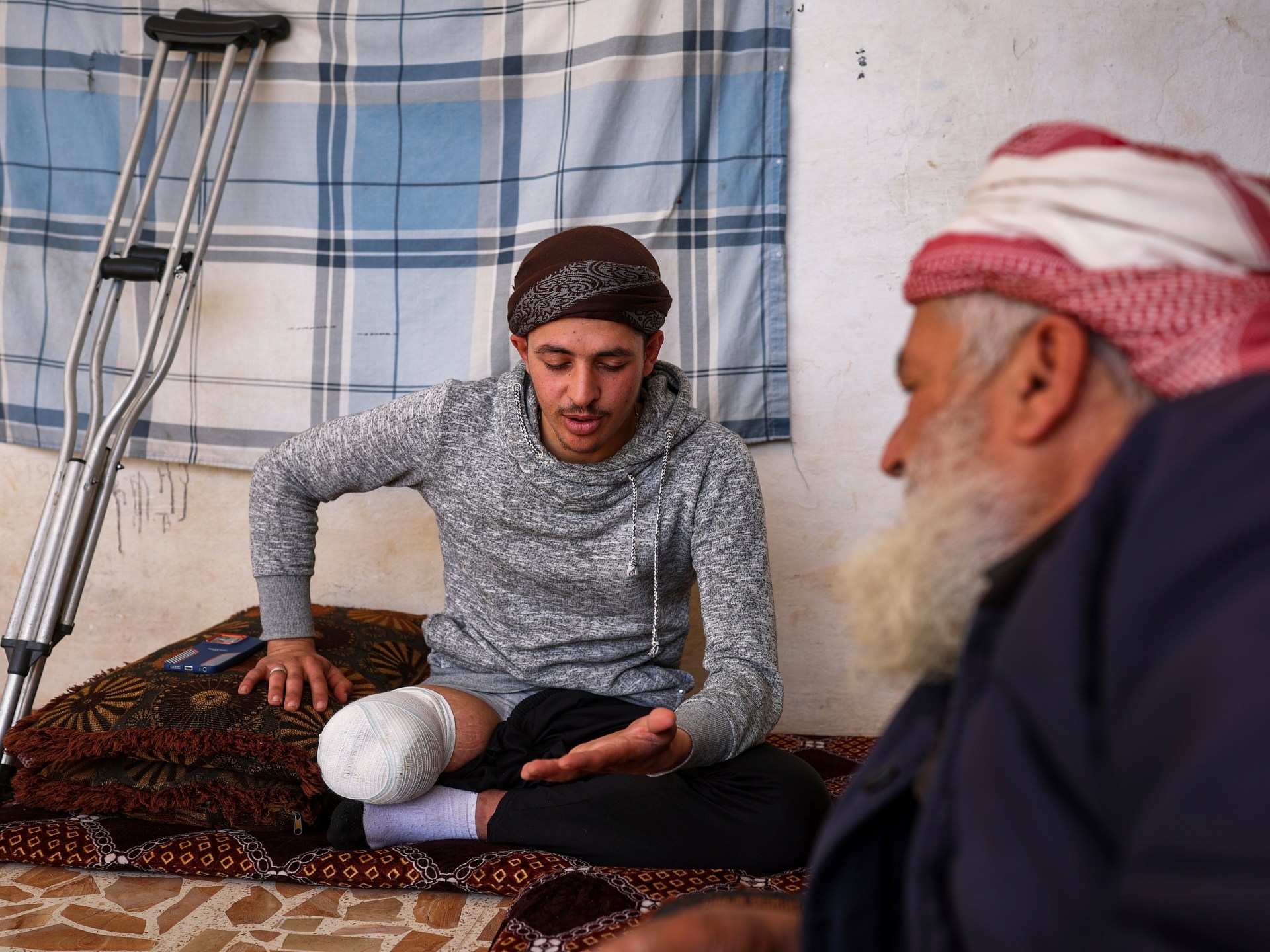Suleiman Khalil was harvesting olives in a Syrian orchard with two friends four months ago, unaware the soil beneath them still hid deadly remnants of war.
The trio suddenly noticed a mine lying on the ground. Panicked, Khalil and his friends tried to leave, but he stepped on a hidden mine that exploded. Terrified, his friends ran to find an ambulance, but Khalil, 21, thought they had abandoned him.
Khalil’s left leg was badly wounded in the initial explosion. His right leg was blown off from above the knee in a second blast. He used his shirt as a tourniquet on the stump and screamed for help until a nearby soldier heard him and rushed to his aid.
While the nearly 14-year Syrian war came to an end with the fall of Bashar al-Assad on December 8, war remnants continue to kill and maim.
Mines and explosive remnants – widely used since 2011 by Syrian government forces, its allies and armed opposition groups – have contaminated vast areas, many of which became accessible only after al-Assad’s government collapsed, leading to a surge in the number of landmine casualties, according to a recent Human Rights Watch (HRW) report.
Experts estimated that tens of thousands of landmines remain buried across Syria, particularly in former front-line regions like rural areas of Idlib governorate.
At least 249 people, including 60 children, have been killed and 379 injured by these munitions since December 8, according to INSO, an international organisation that coordinates safety for aid workers.
Landmines not only kill and maim but also cause long-term psychological trauma and broader harm, such as displacement, loss of property and reduced access to essential services, HRW says.
Source: Aljazeera

Leave a Reply